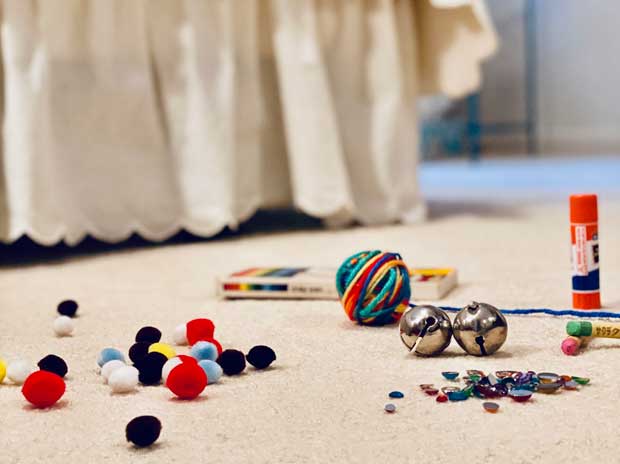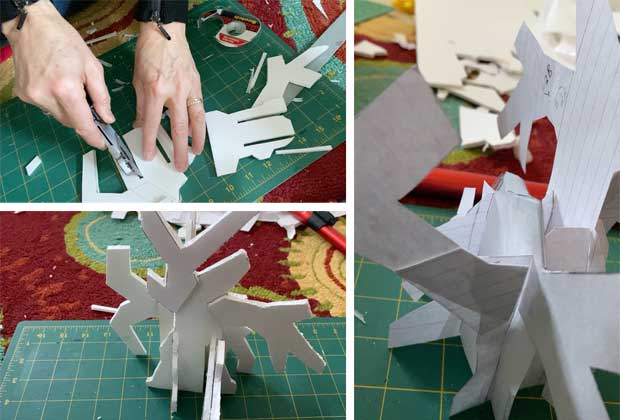
Through an art class, I have been recently introduced to artist Rochelle Feinstein. Feinstein writes about the importance of chronicling the creative process and each stage of making. She explains that these various periods became special markers.
For her, the history of making started when she was only four years old. Her space, a child sized bed, “supported a menagerie of stuffed animals, systematically arranged by color, size, and species.”[1] Though unaware at the time, Feinstein, from a young age, was already setting the stage for her future studio work.
Reflecting on Feinstein’s creative journey, I had my own epiphany. After living everywhere from Japan to Germany and places in between, my husband moved our family to my childhood home in the Midwest. Years later, after our children left the homestead, I have a whole house with unoccupied spaces to expand my studio into. As the light changes throughout the day, I shift my projects from one room to the next, following the sun from rise to set.
One sunny morning, while sitting on the floor of my childhood bedroom to work on my next ArtPrize installation, I realized that I was in the exact spot where my artist’s heart first formed. My studio practices started in that very room. As a child, I spent hours after school on the floor in my bedroom, creating mini-installations from old shoe boxes, Dixie cups, fabric, sequins, and all kinds of other found treasures. In that moment, I uttered a prayer of gratefulness—my creative journey had crossed two oceans, three continents, only to return back home to the humble floor of my childhood studio.

To design Yellow Ribbon, I started with a paper pattern. Next, I created a foam board model.
[1] The Studio Reader: On the Space of Artists, Grabner, 2010, University of Chicago Press, Rochelle Feinstein, p 21.






